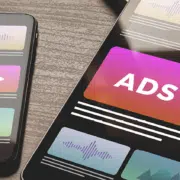Your Logo is More Than Just a Font
We do a lot of brand work here at Chartwell Agency, and that includes refreshing an organization’s existing logo or designing a new logo altogether for a business.
Regardless of the end goal, we always start with a thorough discussion about a client’s brand – a better understanding helps us create a look and feel that’s unique to them. A new or refreshed logo should:
- Speak to your audience.
- Create an emotion.
- Define you in an industry.
- Separate you from your competition.
- Be flexible in its application.
- Be easy to read. (This may seem like a no-brainer, but I’m always surprised how many logos I see that I can’t read or create unfortunate confusion that might seem funny at the time but is likely unintentional.)
During this process of information gathering, we start to get ideas about what logo style might work best. Yes, a logo can be as simple as a name typed out in a font, but there should be answers as to why it’s THE font you’re using. Those answers should align with the bullet points listed above.
Here are a few of the logo style strategies we discuss with our clients as we dive into visualization. Sometimes, it’s clear as to what style is wanted, needed, and appropriate. Other times, it requires some exploration to determine the best route.
Wordmarks (text)
This is a text-only logo. Uniqueness is key here because of the simplicity. Think Amazon, Disney, and Google.

Lettermarks (initials)
Again, this is all text, but it’s based on initials or an abbreviation of a company name. This is best used if you have a long name that lends itself to being shortened. A unique approach to a font is important here, too, because of the simplified visual presence. Think CNN, HBO, and H&M.

Brandmarks (symbol only)
This is representation by just a graphic symbol and is not usually where organizations start with their logo. It’s something that typically evolves and is transitioned to as you gain brand equity and recognition.
It can be developed at the beginning but usually doesn’t stand on its own until you have reached that level of audience recognition. I think the need and adoption of this route lends itself a lot to the mobile experience. Most of us have come to recognize a brand and product simply by its brandmark, like Target, Apple, and Twitter.

Combination Marks (text and symbols)
This can borrow from all the categories listed above. Combining text and symbols is a great way to re-enforce or develop your brand image with a symbol and also get you name in front of people. This is probably the most common type of logo configuration. Think NBC, Dunkin Donuts, Hallmark… the list goes on.

Emblem (text inside a symbol)
This is really a more integrated approach to the combination mark. The text portion lives inside the emblem and becomes part of the design. Though it’s more connected, it can also prove more difficult to work with because of its increased complexity and scale of elements. Things can quickly become indiscernible in certain types of reproduction. Think Starbucks, NFL, government or education entity.

Take a minute to consider all the places your logo is used – in your email signature, on your letterhead, on marketing collateral, and on the sign outside your building. Could your logo/brand use a refresh? We can help you navigate the branding process to determine the best strategy to tell your story.









